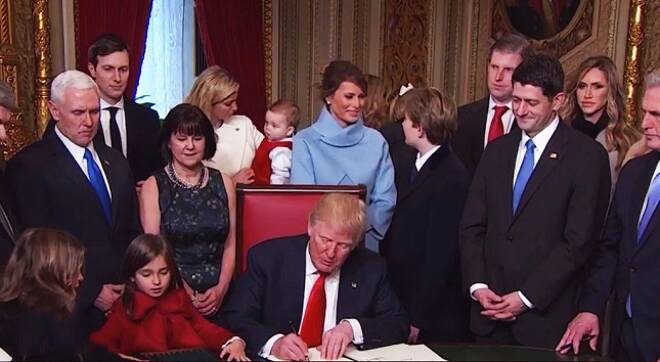Advertisement
Advertisement
The Pros of Reversing The Dodd-Frank Act
By:
In the wake of the 2008-2009 financial crisis that led to the demise of Lehman brother and the onset of the “great recession”, the Dodd-Frank act was put
In the wake of the 2008-2009 financial crisis that led to the demise of Lehman brother and the onset of the “great recession”, the Dodd-Frank act was put into place to ensure that banking institutions would have the proper regulation to avoid the risk of ruin. Fast forward 7-years and President Trump is now setting the stage for deregulation, as banks have had a very difficult time making money and have shied away from lending due to what appears to be over regulation.
The Dodd Frank Wall Street Reform and Financial Protection act was passed into law in the United States in July 2010. The focus was to ensure that banks did not become too big to fail in the wake of the bailouts of large financial institutions including Citibank and Bank of America. In addition, many investment banks were turned into banks including Goldman Sacks and Morgan Stanley in an effort to protect investors.
Some of the regulations that were put into place, generated stress tests on banks to make sure they held the appropriate regulatory capital to defend against a situation similar to the declines in liquidity experienced in late 2008. These financial regulations led to a reduction in lending which has capped economic growth. Historically, in the United States, declines in growth were offset by bank lending which helped the economy gain footing. So far over the last 6-years, banks have sat on the sidelines, and their stock prices reflect very little expected growth.
President Trump ran on a platform where he pledged to deregulate, with a focus on the Dodd-Frank act. Early in his presidency, he has set in motion a plan for scaling back the financial regulation that he believes is burdensome to financial institutions. He has directed regulators to identify unfriendly rules and laws, including the Dodd-Frank act.
The question is how will deregulation help banks, as well as consumers and the economy. In the short term, this process can be very helpful toward accelerating economic growth and consumer spending. Removing some of the hurdles banks have to take, will allow them to lend more with fewer ramification if they don’t meet the Federal Reserve stress tests. Additional lending will help the shares of banking institutions, which will generate a snowball effect as these companies begin to become more active. That should lead to additional lending.
During 2010, mortgage lending shrank, but the removal of regulation will allow mortgage lending to become looser, which will allow home owners to refinance their mortgages and potentially take money out of their homes and spend. So, less regulation can lead to additional consumer spending, and since 65% of U.S. GDP is driven by consumer spending, one could make the argument that less regulation will lead to increasing U.S. economic growth.
Trump will likely experience a fight in congress as many are still concerned that banks will go overboard and create new products that are similar to the CDO’s and CMO’s that led to the financial crisis. If congress and the U.S. President can find common ground, the reversal of the Dodd-Frank act could be beneficial for the U.S. economy, banks and the consumer.
About the Author
David Beckerauthor
David Becker focuses his attention on various consulting and portfolio management activities at Fortuity LLC, where he currently provides oversight for a multimillion-dollar portfolio consisting of commodities, debt, equities, real estate, and more.
Latest news and analysis
Advertisement
